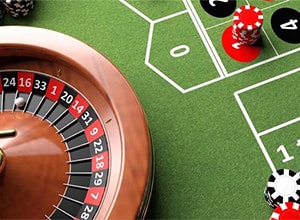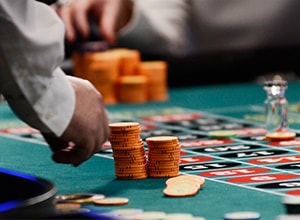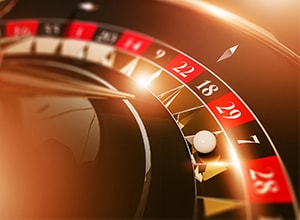Just What Is the Hollandish Roulette System?
Smart roulette players are well aware of the fact that playing at a table with a biased wheel is pretty much the only way to exploit this game of chance so that it works to one’s advantage. Unfortunately, biased wheels are a rarity these days as gambling establishments would normally take the necessary precautions to hinder advantage players in their quest towards prevailing over the house. Such players would readily tell rookies the underlying math of roulette makes it impossible to overcome the house edge by utilising betting systems. The odds of winning always remain the same no matter what strategy is in play.
Some betting systems, however, can soften the negative impact of variance on one’s bankroll. One such strategy is the Hollandish system. This is a negative progression system, so when you lose, you increase your bets in an attempt to recuperate your previous losses. The Hollandish progression has been devised with even-chance bets in mind like black/red, odd/even, and high/low.
- Up to $3000 welcome bonus upon first three deposits
- Well-established US-friendly brand
- Top quality casino games
- Extra bonuses for Bitcoin depositors
 ACCEPTED
ACCEPTED
PLAYERS FROM UNITED STATES: OHIO ARE ACCEPTED AT THIS CASINO
- Well-established brand
- Prompt payments
- 24/7 customer support
- Wide range of casino games
 ACCEPTED
ACCEPTED
PLAYERS FROM UNITED STATES: OHIO ARE ACCEPTED AT THIS CASINO
- Up to $300 bonus upon first three deposits
- Great loyalty program
- Superb loyalty program
- Great selection of table games
 ACCEPTED
ACCEPTED
PLAYERS FROM UNITED STATES: OHIO ARE ACCEPTED AT THIS CASINO
- Accepts players from all over the world
- Great daily bonuses
- Fair bonus rules and requirements
- Award-winning customer care team
 ACCEPTED
ACCEPTED
PLAYERS FROM UNITED STATES: OHIO ARE ACCEPTED AT THIS CASINO
Some of the other negative systems have been adapted to work with bets like dozens and columns but this is impossible with the Hollandish because it is a three-stage system. It is highly advisable not to adopt it for inside bets because otherwise, you may end up incurring substantial losses.
Unlike other systems based on negative progressions like the Martingale and the Labouchere, the Hollandish roulette strategy is not very aggressive and requires a fairly small bankroll. One of the most interesting peculiarities of the system is that the bet-size adjustments are not dependent on the result of the previous coup. This is so because the betting session is divided into groups, or stages, of three coups each. Therefore, the amount the player bets changes once every three spins.
How Can the Hollandish Roulette System Make You Money?
 As was already explained, the Hollandish requires players to adjust the size of their bets once every three spins. Each group of three coups is referred to as a the Hollandish Block. The first thing the player must do is decide what their base betting unit will be. You can use any unit size you like as long as it corresponds to the size of your overall bankroll for the session.
As was already explained, the Hollandish requires players to adjust the size of their bets once every three spins. Each group of three coups is referred to as a the Hollandish Block. The first thing the player must do is decide what their base betting unit will be. You can use any unit size you like as long as it corresponds to the size of your overall bankroll for the session.
The progression the Hollandish utilises may appear intimidating at first glance but in reality, it is actually quite simple. The bet increase depends on the size of your initial wager. If you are betting only one unit per coup, you need to follow this progression: 1, 3, 5, 7, 9, 11, 13 and so on. Provided that you opt for betting two units per coup, you resort to the following progression: 2, 6, 10, 14, 18, 22, 26.
Each of these numbers indicates the number of bet units you need to stake per coup. As you can see, in the second instance, you are required to increase your stakes by four units whereas in the first case the increase involves only two additional units. I will demonstrate how it works with a base unit of $10 for the sake of simplicity.
You start off with a bet of one unit, or $10 in our case, and this amount is played three times in a row. If you are on profit by the end of the three bets, then you start again at the beginning of the progression and bet one unit of $10 three times in succession. Being on profit in this instance means you need to win at least two of the three coups your “mini” session consists of. When a mini session ends on profit for you, you go back to the beginning and bet one unit. If you are in the negative, i.e. you have lost two out of three coups during the mini session, you try to recuperate your previous losses by increasing your next stake by two units (you bet $30 this time).
Once again, if at the end of the next three bets you are on profit, you go back to one unit and start again. If you are still losing money overall, increase by another two units. To put it more succinctly, you lose a mini session and proceed to the next number in your progression. You win a mini session and return to the beginning by betting one base unit again.
You can see that this system is quite straightforward but some roulette rookies may find it confusing in the beginning. Complexity mostly results from having to alter the progression depending on your starting bet size as well as from the necessity to keep track of winning/losing spins in groups of three coups.
It would be easier for roulette novices to get the hang of how the Hollandish works by way of illustration. Take a look at the table so you can understand what I am talking about.
| Stage | Coup | Number of Base Units | Bet Type | Win/Loss | Profit in Base Units | Profit in $ |
|---|---|---|---|---|---|---|
| #1 | 1 | 1 | Red | Loss 1 | -1 | $10 down |
| #1 | 2 | 1 | Red | Loss 1 | -2 | $20 down |
| #1 | 3 | 1 | Black | Win 1 | -1 | $10 down |
| #2 | 1 | 3 | Black | Loss 3 | -4 | $40 down |
| #2 | 2 | 3 | Odd | Win 3 | -1 | $10 down |
| #2 | 3 | 3 | Odd | Loss 3 | -4 | $40 down |
| #3 | 1 | 5 | Even | Win 5 | 1 | $10 up |
| #3 | 2 | 5 | Red | Win 5 | 6 | $60 up |
| #3 | 3 | 5 | Even | Win 5 | 11 | $110 up |
| #4 | 1 | 1 | Red | Loss 1 | 10 | $100 up |
| #4 | 2 | 1 | Black | Win 1 | 11 | $110 up |
| #4 | 3 | 1 | Red | Win 1 | 12 | $120 up |
You can see from the table above that after the first stage of three coups, your total profit is -1 base unit because you have registered two losses. I have decided to use base units of $10 so we can perform the calculations with nice round numbers. The second stage of three coups then requires you to bet 3 units per spin. As you fail to generate net profits during the second stage and have two losing coups again, you end up with a total of 4 units behind.
This calls for yet another bet increase during the third stage of the session – you proceed with your Hollandish sequence and bet 5 units during the next three spins. You win all three coups and finally turn a net profit of 11 units or $110. After this, you need to return back to the beginning of the sequence and bet 1 unit for the next three coups of stage four. You register two wins and one loss and end the “mini” session with $120 in profits. Should you proceed, you continue according to the rules of the Hollandish and bet 1 base unit again.
What Makes the Hollandish Roulette System So Good?
 While there is no way to alter the odds of winning with any given system, the Hollandish has a number of perks to offer to roulette players. In the general run of things, negative progressions are to be avoided because they often involve a steep bet increase which may cost you your entire bankroll.
While there is no way to alter the odds of winning with any given system, the Hollandish has a number of perks to offer to roulette players. In the general run of things, negative progressions are to be avoided because they often involve a steep bet increase which may cost you your entire bankroll.
Unlike the Martingale and the Labouchere, the betting progression of the Hollandish is not as steep. Therefore, the main benefit of this strategy is that the bets do not increase as quickly, leading to an empty bankroll before you see a win. This is so because here players are not expected to jump to the next number in the sequence after every single loss. Each stage of the system comprises three coups and if two or three of those are losing ones, only then will the player proceed to raise the bet amount for the next stage.
It makes sense that you will deplete your bankroll at a slower pace if you have to up your stakes once every three spins instead of raising your bets after every loss. Even if each unit is $5 or $10, it will take a longer time before you have to start betting huge amounts of money. The same applies to the second betting sequence where bets increase in increments of four units after each unprofitable stage.
This peculiarity of the Hollandish is in a stark contrast to the Martingale roulette system, where starting with $5 (or with a larger base unit) would leave many players going bust after just a few spins with consecutive losses because each losing wager calls for betting double the amount lost on the previous coup. With the Hollandish, roulette players are still chasing their losses, so to speak, but at least they do it at a slower pace.
Additionally, players are not required to register more wins than losses in order to generate a profit or break even in each betting stage. Despite that it should be mentioned that if you suffer a longer string of losing bets, you still have to register several consecutive wins in order to get back to your starting point bankroll-wise. And sometimes this may be more difficult to achieve. Still, the Hollandish remains one of the less aggressive negative-progression systems and as such, is recommended to players from the low to medium bankroll-spectrum.
Another benefit of adopting the Hollandish stems from the fact the gradual progression in bet sizing would prevent you from hitting the table maximum. This is very important when systems are in play because if the maximum is reached during a long losing streak, you will be unable to recuperate your losses, or at least not in full.
Why the Hollandish Strategy Is Not Perfect?
 Like most things in this world, the Hollandish roulette system is anything but perfect. One of the biggest challenges roulette rookies who adopt the Hollandish will face is the system’s increased level of complexity. The principle on which the system is based renders it a bit confusing to players who have grown accustomed to raising their bets after every single loss.
Like most things in this world, the Hollandish roulette system is anything but perfect. One of the biggest challenges roulette rookies who adopt the Hollandish will face is the system’s increased level of complexity. The principle on which the system is based renders it a bit confusing to players who have grown accustomed to raising their bets after every single loss.
Here, one needs to track their results during each three-coup stage. It may be slightly confusing in the beginning but it does not take too much time to get used to how the system works. Of course, if you decide to test this system at home with one of the online variants of the game, you can resort to a pen and a notepad and write down your results until you fully master the Hollandish.
One thing you have probably noticed is that the rewards with the Hollandish are not massive, and you are not going to make a huge amount of money in a short amount of time. While there will be plenty of occasions where you will be on profit within just a minute or two, the reward is not life-changing.
Not only that, but there will be instances where you find yourself in a hole which only seems to get deeper. This usually happens after prolonged losing streaks where you need to register several wins in a row to wipe the slate clean, so to speak. This can be risky, and even a small value per unit can lead to substantial bets. In this instance, it is wise to set a limit and know when to walk away, or start again. Decide what percentage of your initial bankroll for the session you are comfortable parting with and quit as soon as you have reached your loss limit.
The biggest defect of the Hollandish is that, like all other betting systems, it is incapable of tipping the odds in favour of the player. All this system can do for you is to tell you when and by how much you need to increase or reduce your wagers. This approach offers some level of efficacy when it comes to bankroll management but when the house edge is concerned, it can do nothing for you. You will always battle the same casino advantage (2.70% in European, 1.35% in French, and 5.26% in American roulette) regardless of whether you are employing the Hollandish, the Martingale or any of the other systems that rely on bet-sizing modification.
Conclusion
I am actually quite a fan of this system, as it has a lot of benefits to it. It is relatively simple in comparison to other strategies and the degree of risk is inherently lower. While the system can hardly transform you into a millionaire overnight, it can still provide you with a fairly nice profit. The main issue is you can find yourself in a hole that can take a lot of time and money to get out of, which is, of course, the downside of most negative-progression systems.
Before you try the Hollandish at the roulette table, I advise you to decide on your bankroll’s size. Use your overall bankroll as a guideline to determine which of the two Hollandish sequences to use. If you are playing with a more substantial bank, you can go for the second sequence where bets increase by four units after a losing stage. Provided that you have a limited amount of money to play with, it would be best to opt for sequence number one where the progression is less steep since the bets increase by two units only, following a losing “mini” session. That being said, my overall opinion of this system is good and it is one I can recommend to most players.





Here is an improvement of this system. Instead of going 1,3,5,7,etc which is a linear sequence, you go exponential like this, 1,2,4,7,11,16,22,29, etc. You add 1 to the previous number of the sequence. The re4covery is easy if you win early in a linear aequence. If you heve a bad run, it is very hard to recover with a linear sequence that why the exponential sequence is better on a bad run. Try it.
I am having good luck by going in groups of three, and i raise by the amount i lost in the previous stage. then i do another stage and win, and i reduce by one more than that same amount. If i am up two after a round, i go down three, and if I win by three, i go down four. usually it is winning by one, and going down two.
D’s variation of the Hollandish… for each set of three count if you have won or lost. You can only lose or win by 1 or 3 units. if you lose by one, or three, raise your bet the same amount. Since this next round is at a higher scale than the last, you might win by 1 or 3 rounds. in that case, lower your bet by 2 or 4 units.